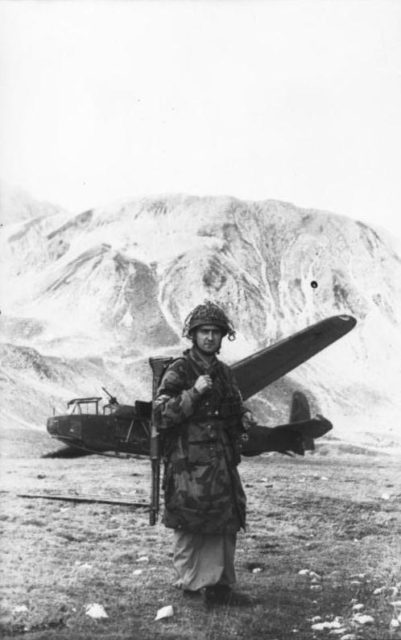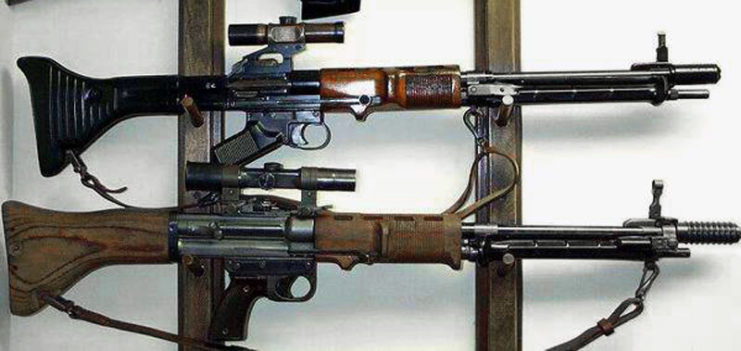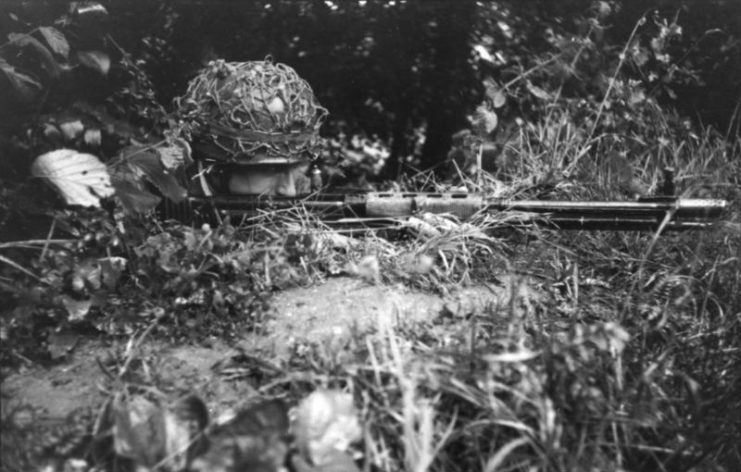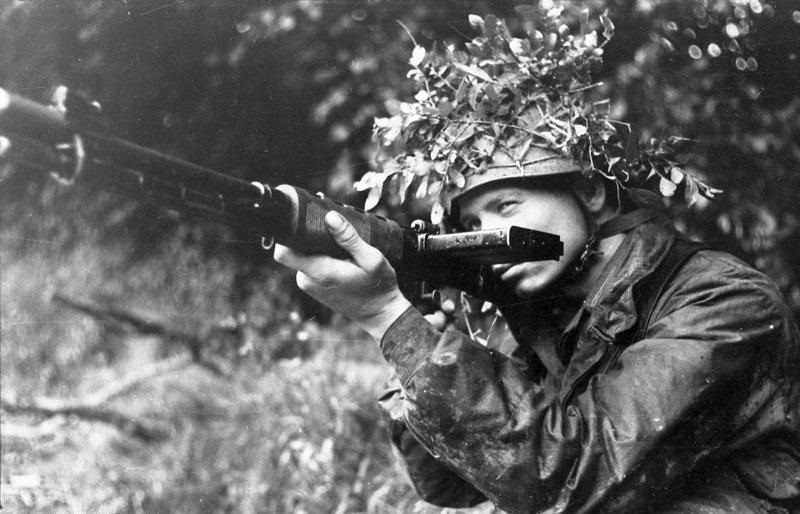The FG 42 was a powerful automatic rifle developed by the Germans during WWII and served in a similar role to the Browning Automatic Rifle (BAR). It was designed for and used by the elite Fallschirmjäger paratroopers. With an ergonomic shape, select-fire capability, and a number of other uncommon features it was one of the most advanced weapons of the war and influenced later firearms.
The FG 42 could perform well in most roles and could do most of the job of submachine guns, rifles, and light machine guns.
Its development started after the German Fallschirmjäger’s experiences at the Battle of Crete. At this time their paratroopers received the same weapons as the standard infantry, like MP 40s and 98k Mauser rifles. For the jump itself though they just carried hand grenades and a pistol. This was because their parachute harnesses necessitated the paratroopers to land on their hands and knees and roll forwards. This maneuverer would have been unsafe with a large weapon strapped to them.
As a result, these weapons had to be dropped separately in a canister carried under the jump aircraft. As you can imagine, jumping into a warzone and then having to hunt for your weapon – which could be hitched on a church spire or high up in a tree – is not ideal. This fatal flaw led to heavy losses in Crete. The Fallschirmjäger received heavy casualties while searching for their equipment after jumping into battle.

As the Fallschirmjäger were a branch of the air force, the Luftwaffe put out a request for a new weapon that could be carried by paratroopers on the jump. To properly serve the ever-changing needs of paratroopers, it was to be a selective-fire, universal weapon that could fulfill the roles of rifles, submachine guns, and light machine guns. It also had to be compact, lightweight, able to fire single shots from a closed bolt, fire in full automatic from an open bolt, and have an attachment point for a bayonet.
This list of requirements was issued in December 1941 and was certainly no easy task to achieve.
FG 42

A number of designs were drawn up by German manufacturers, but it was Rheinmetall’s proposal that was selected for further development. Their version was mostly made from stamped steel – much cheaper than machined parts – and used a gas-operated turning bolt inspired by the WWI-era Lewis light machine gun.
This weapon went through numerous changes and by the end of 1942, Rheinmetall had produced 50 examples of the rifle. There were a few bugs that needed to be worked out, but this is to be expected from any new design. Other changes were brought on by a lack of the required materials. For example, Rheinmetall’s original design used a considerable amount of chrome-nickel steel, but as this was in short supply and needed elsewhere, manganese steel was used instead.
A muzzle brake was added as was a resin-fiber handguard to protect the user’s hands from the hot barrel. It was accepted into service in 1943 and was first used in the field in August that year.
The FG 42‘s bolt mechanism partially extended into the stock, which reduced the weapon’s overall length. The unique side-loading magazine also helped to reduce length as it didn’t need to be squeezed in front of the trigger assembly.
It could fire from a closed bolt during a semi-automatic fire (a closed bolt has fewer moving parts, improving the weapon’s accuracy) and an open bolt during a fully automatic fire (this helped with cooling).

As the weapon was being introduced it underwent many modifications and changes, which resulted in a large number of variants that slightly deviated from each other. However at the time, these variants were not considered separate, so the Germans referred to all versions of the weapon as the FG 42.
The weapon was only produced in small numbers – about 7,000 – due to its use by the Fallschirmjäger. While these troops liked the weapon for its portability, powerful cartridge, and excellent accuracy, it was criticized for a few drawbacks. The weapon was too light for its own good and therefore hard to control during automatic fire. Its magazines carried relatively few rounds but because of their side-mounted position, they offset the balance of the weapon.
After the war, the US investigated the weapon, and it was a major influence on the later M60 general-purpose machine gun, which used design elements from both the FG 42 and MG 42.
